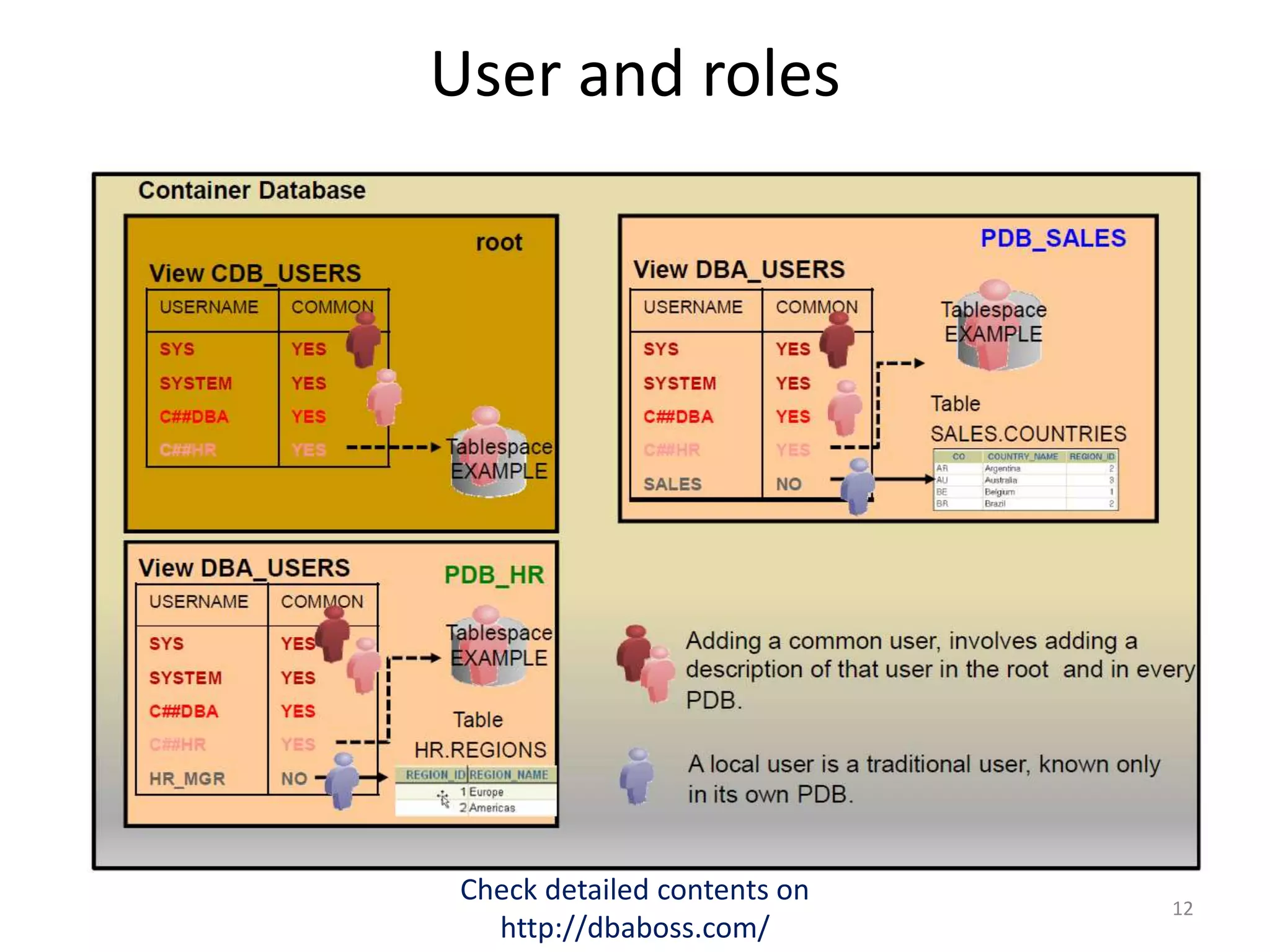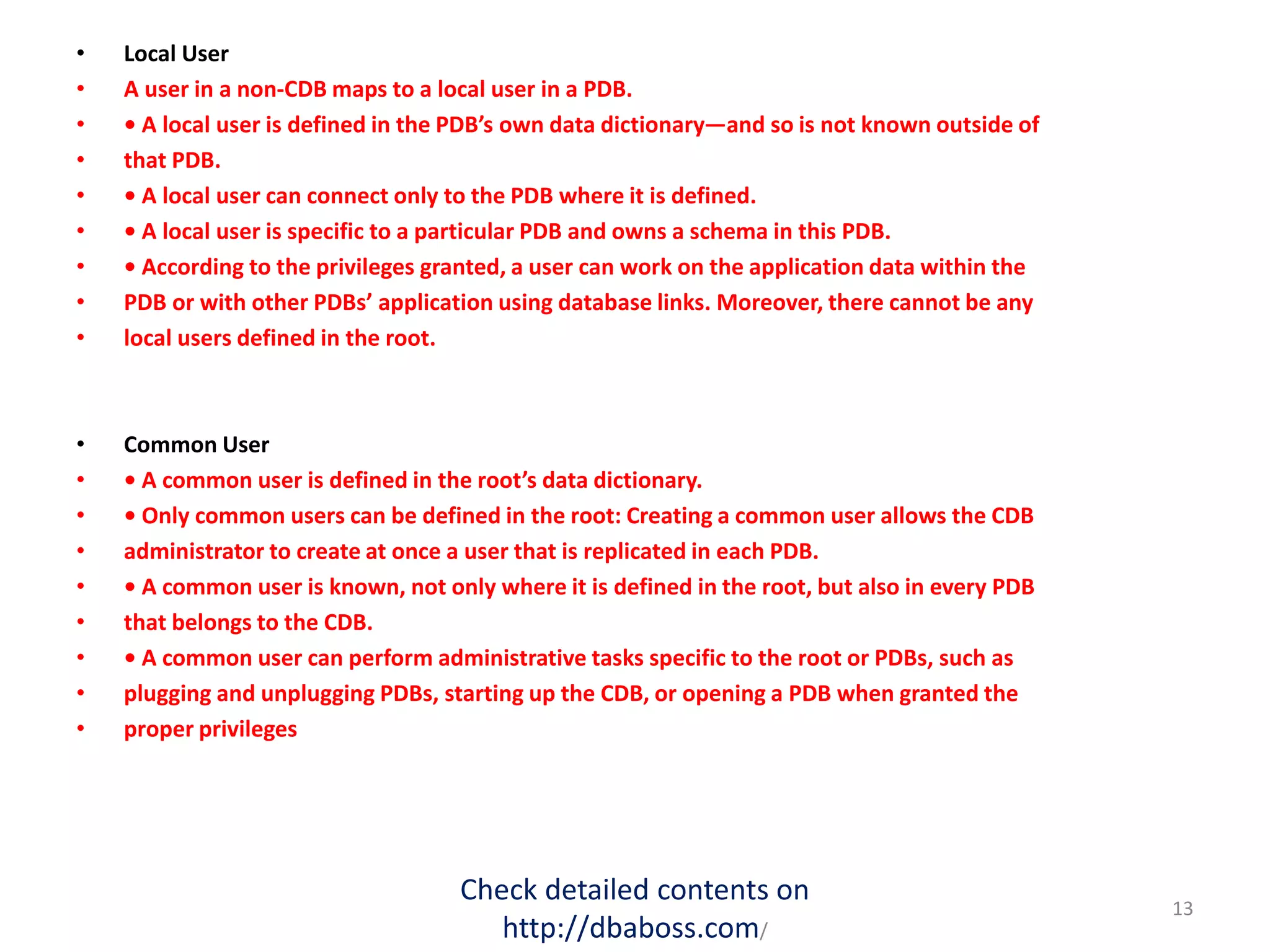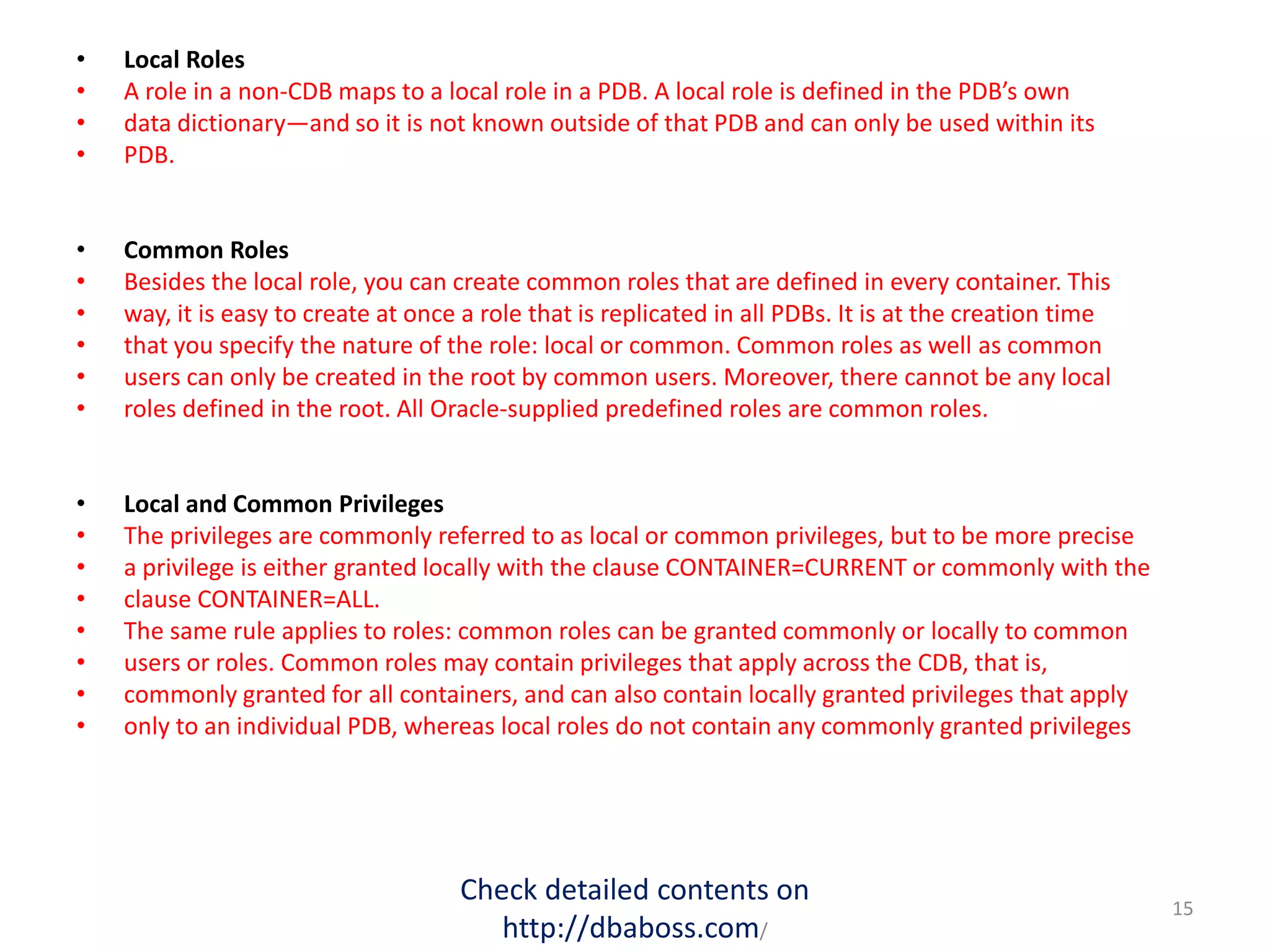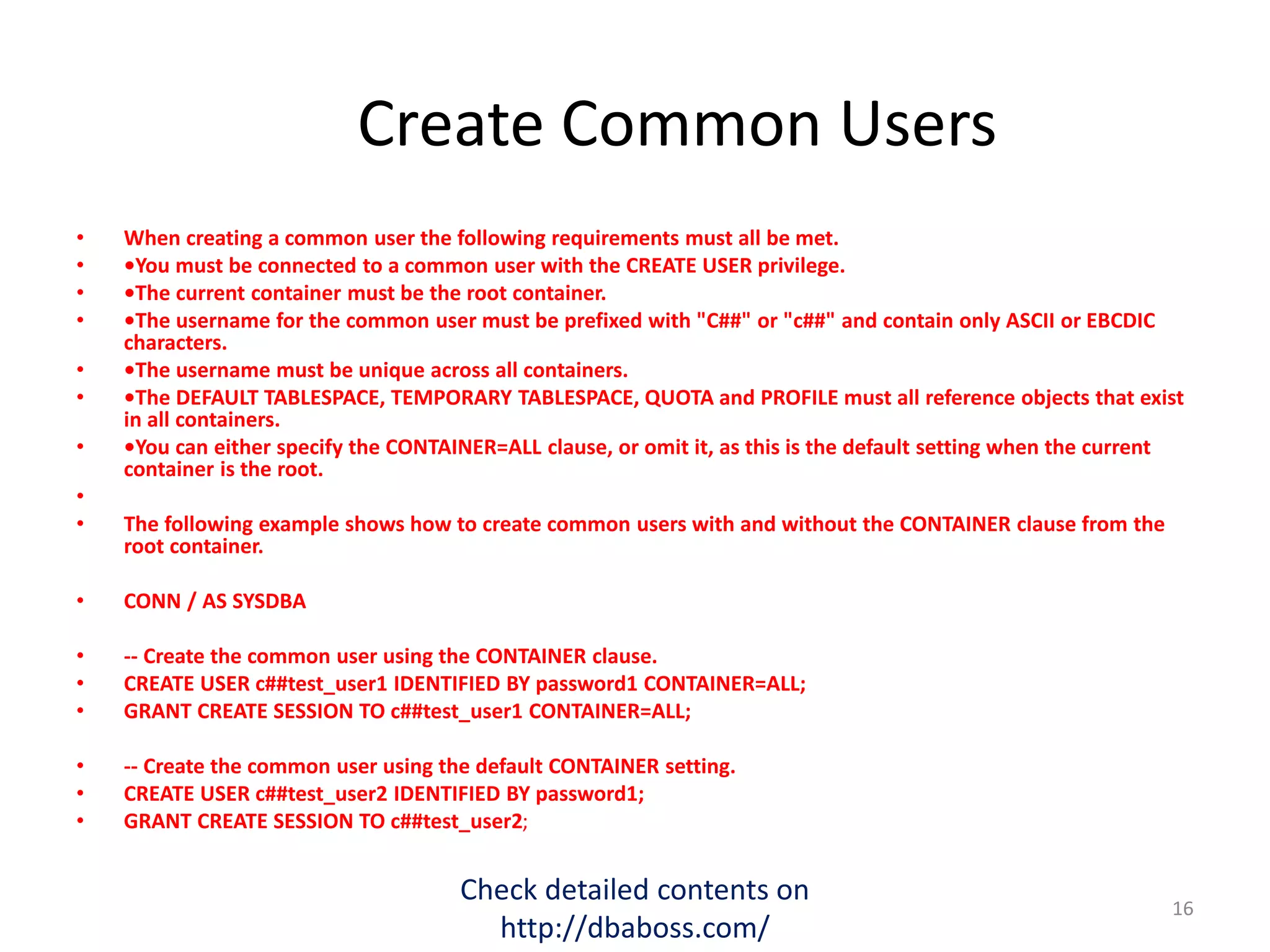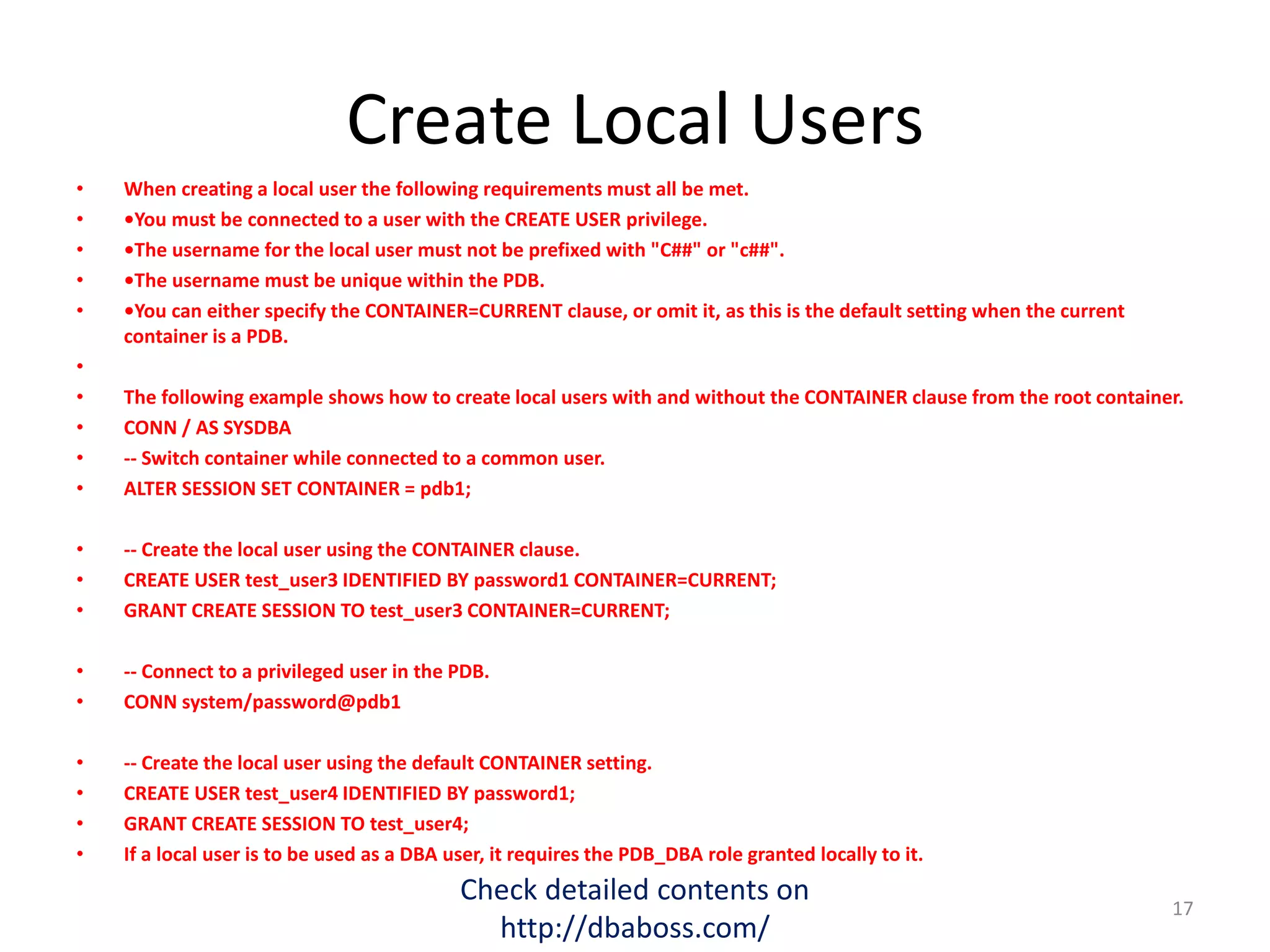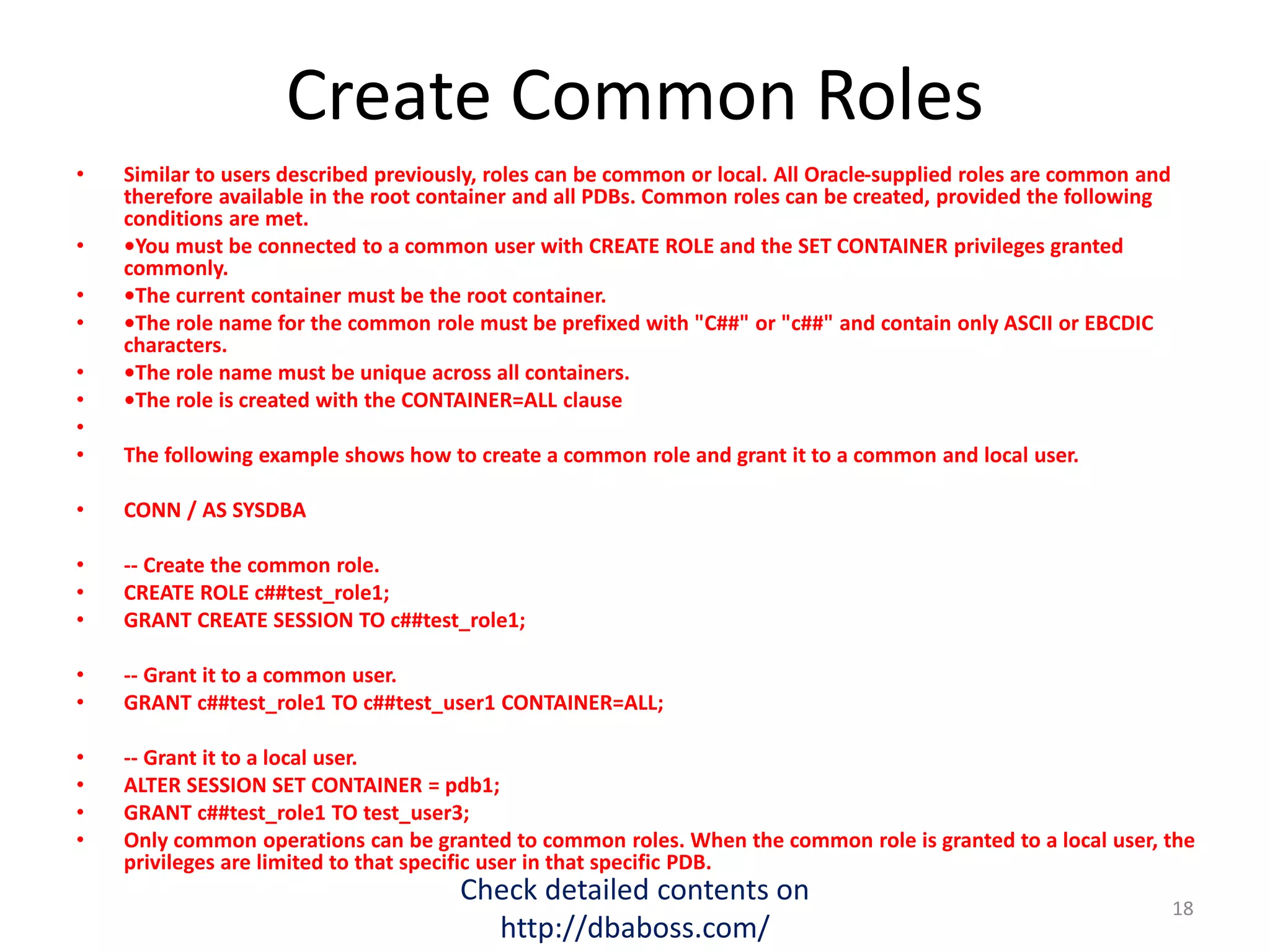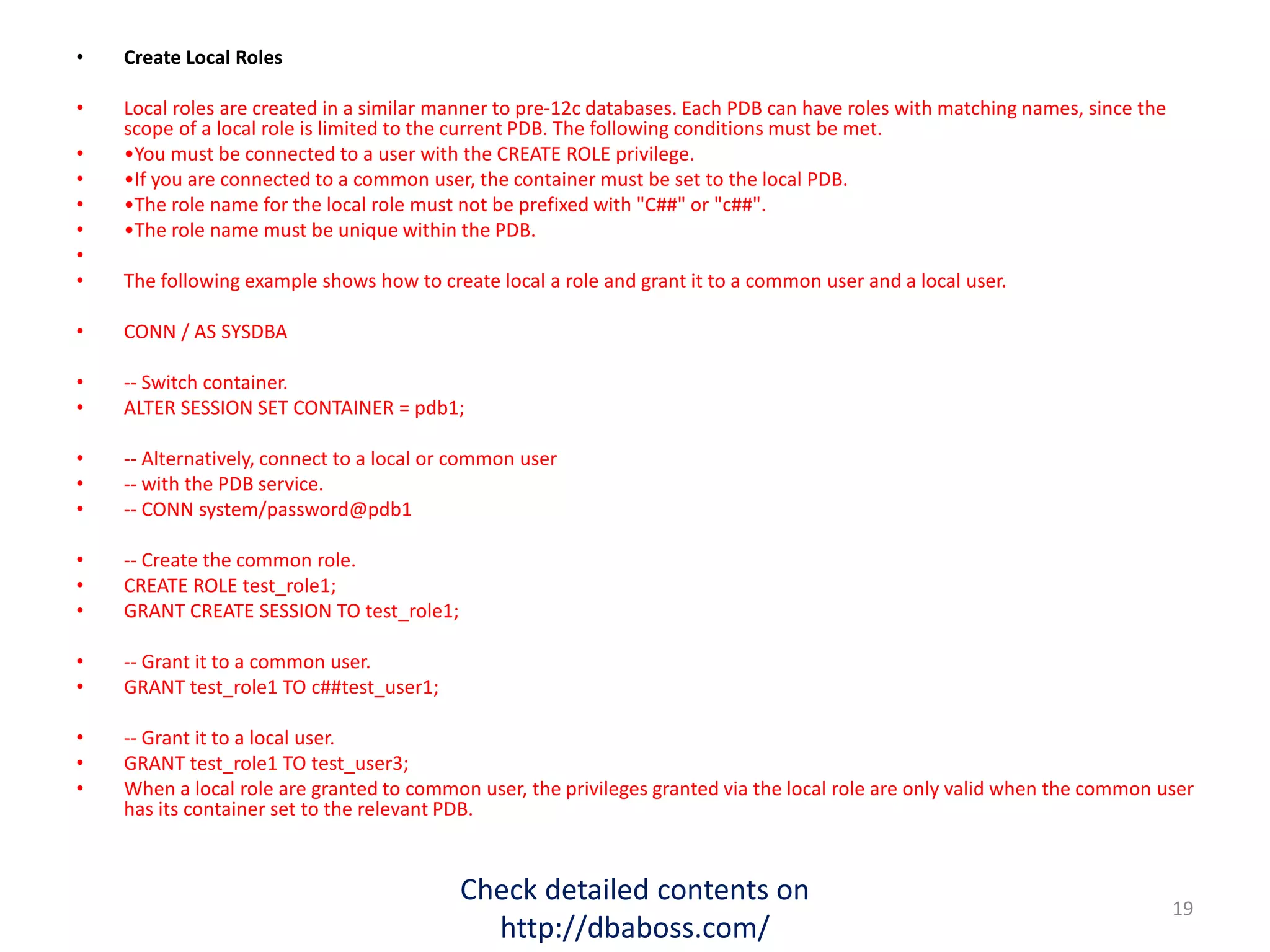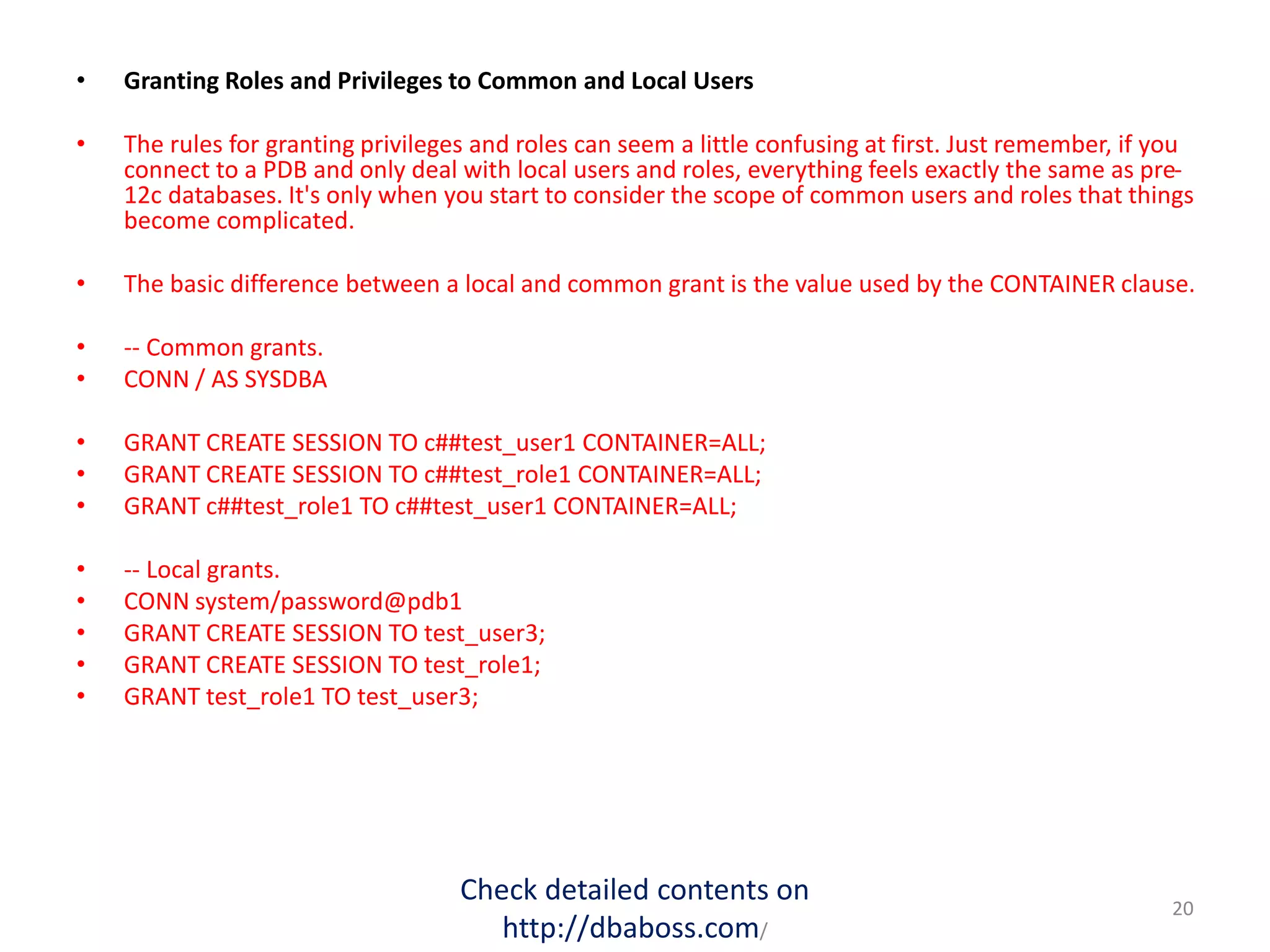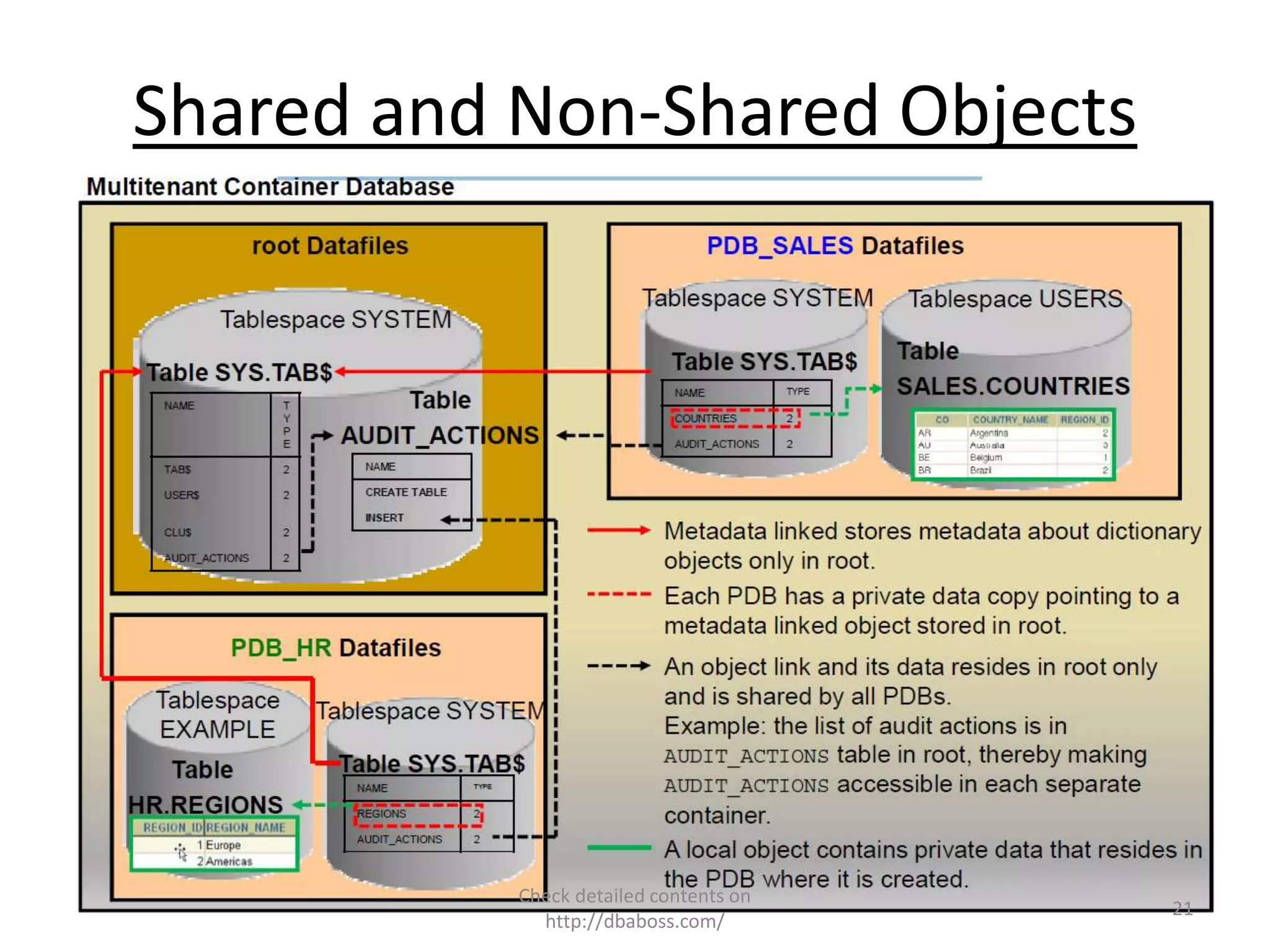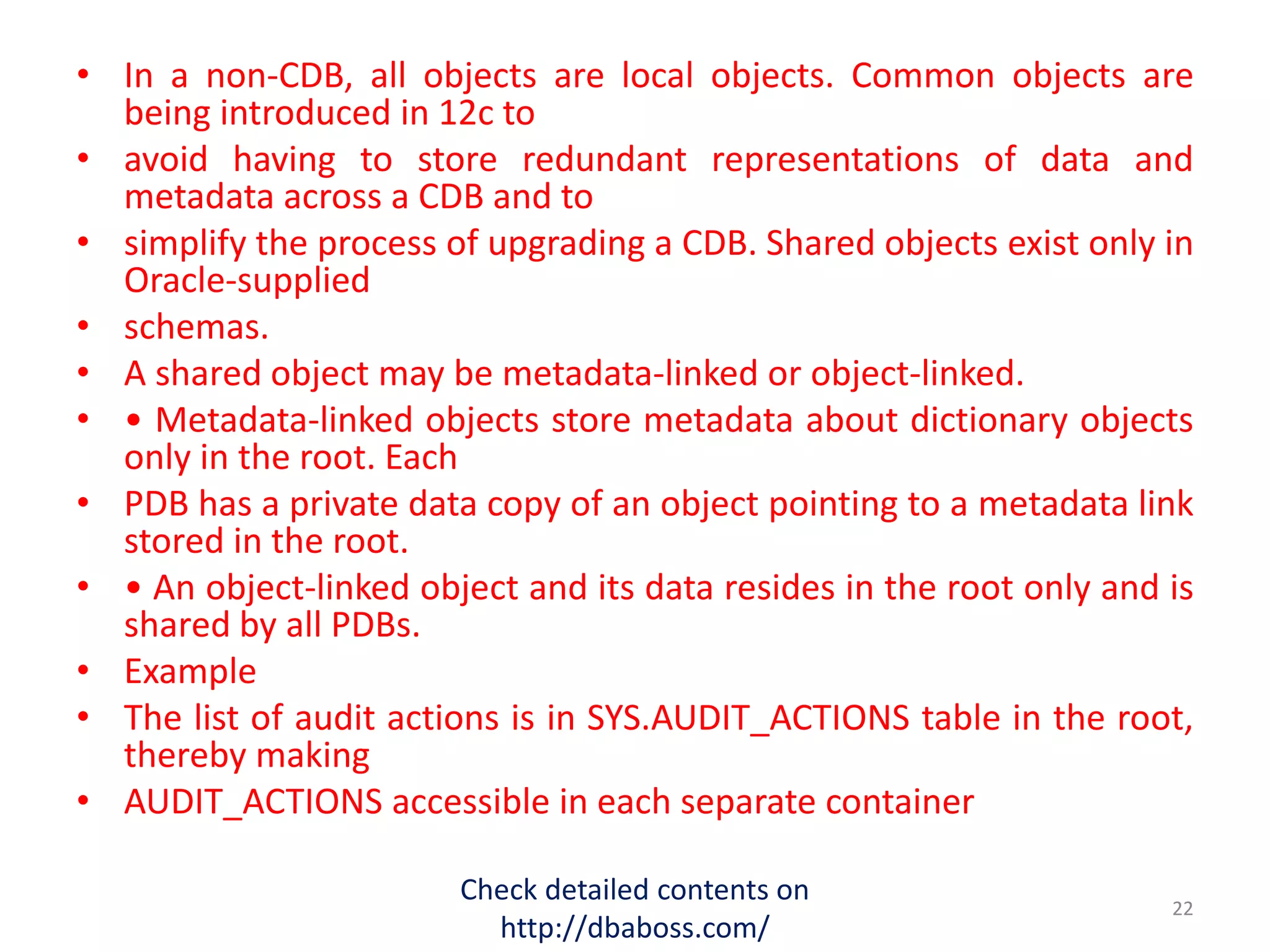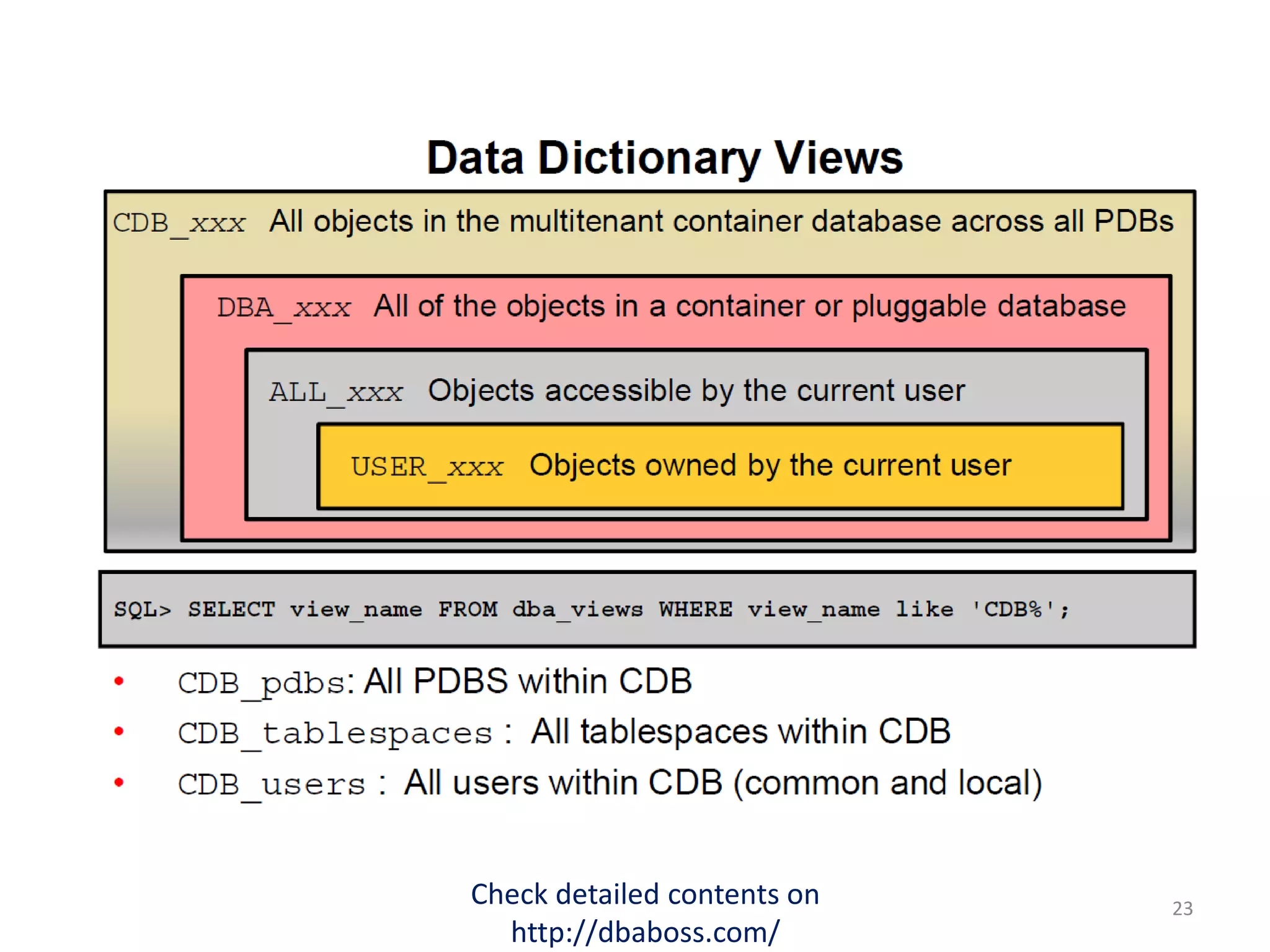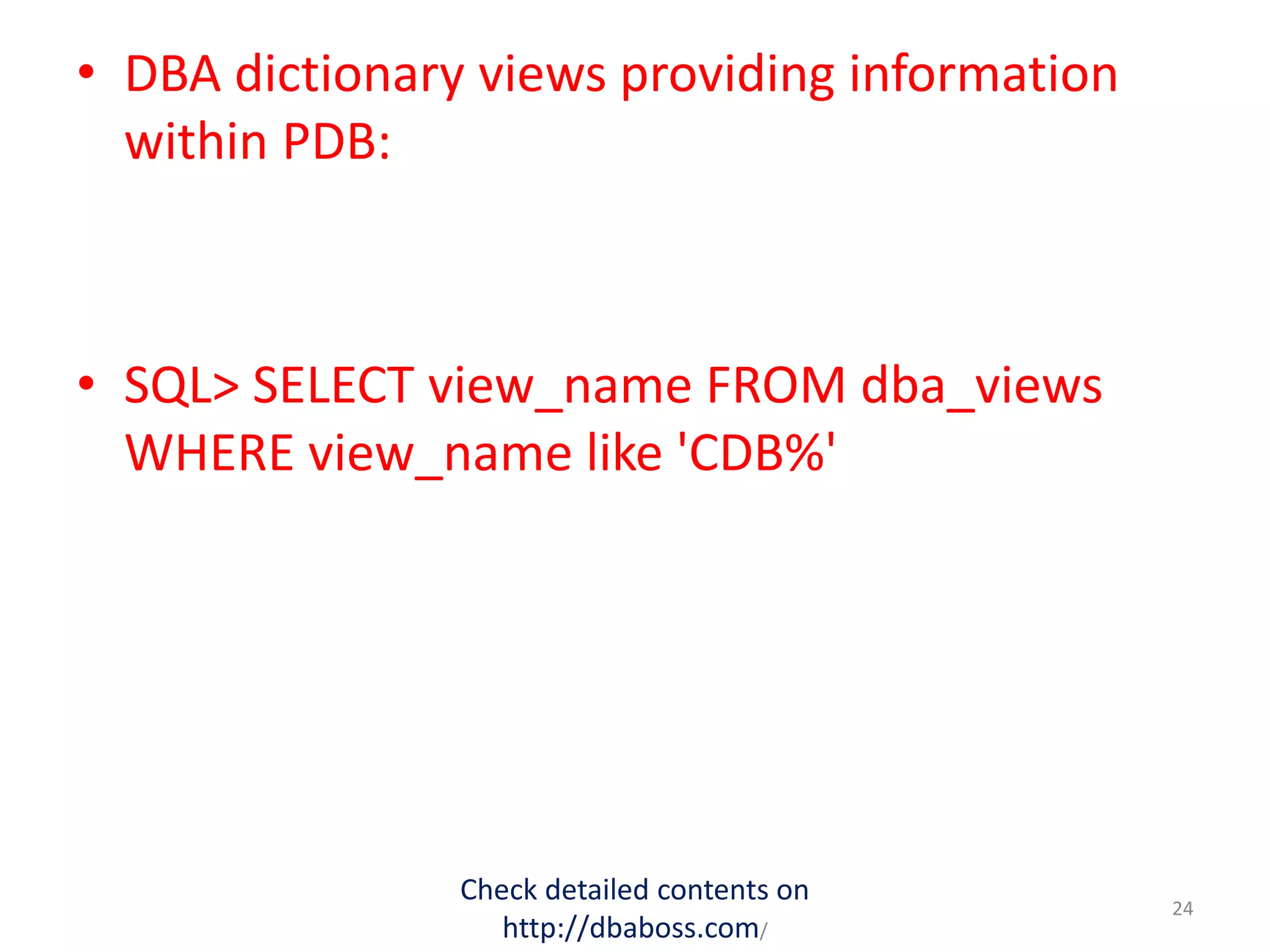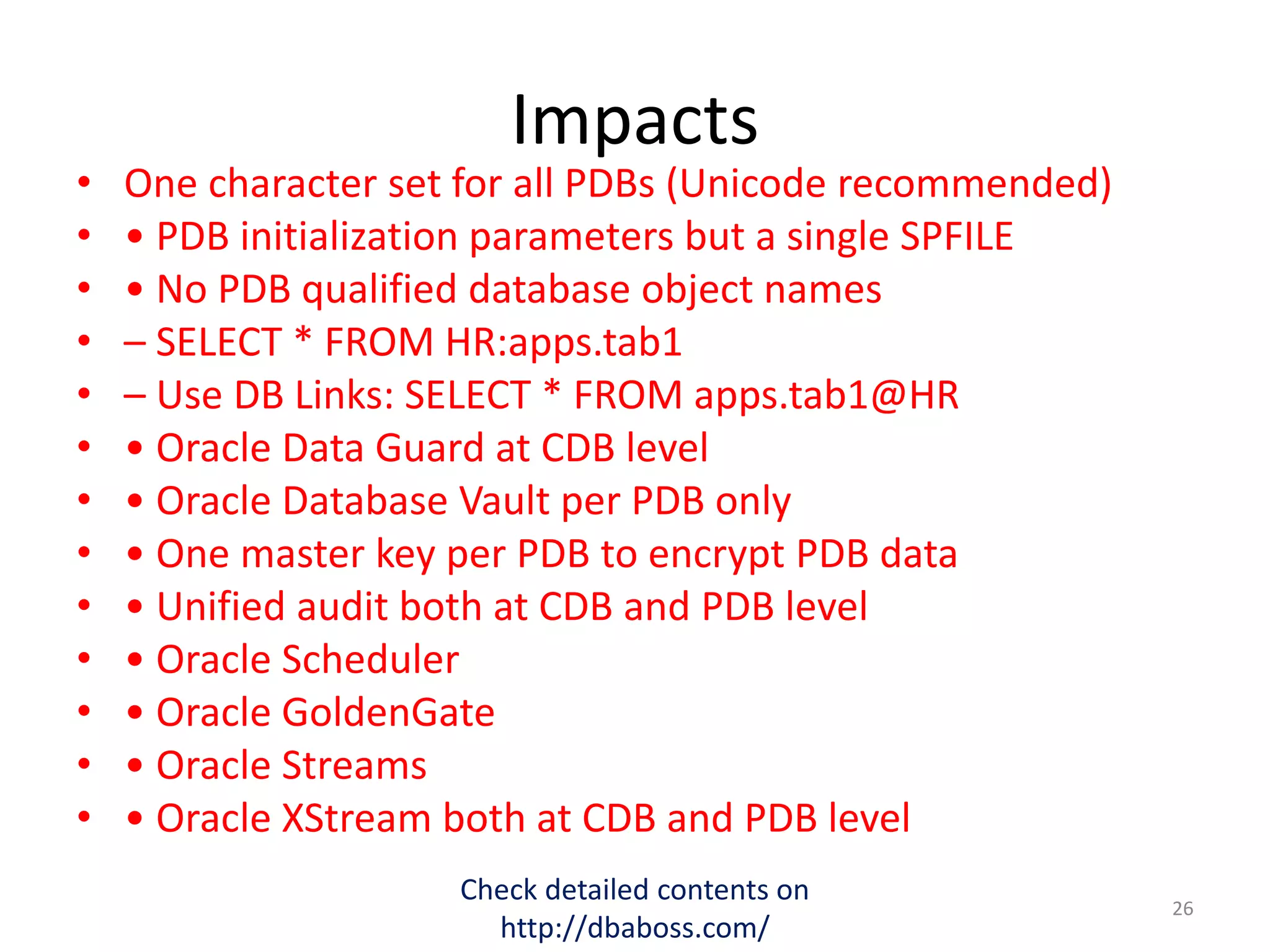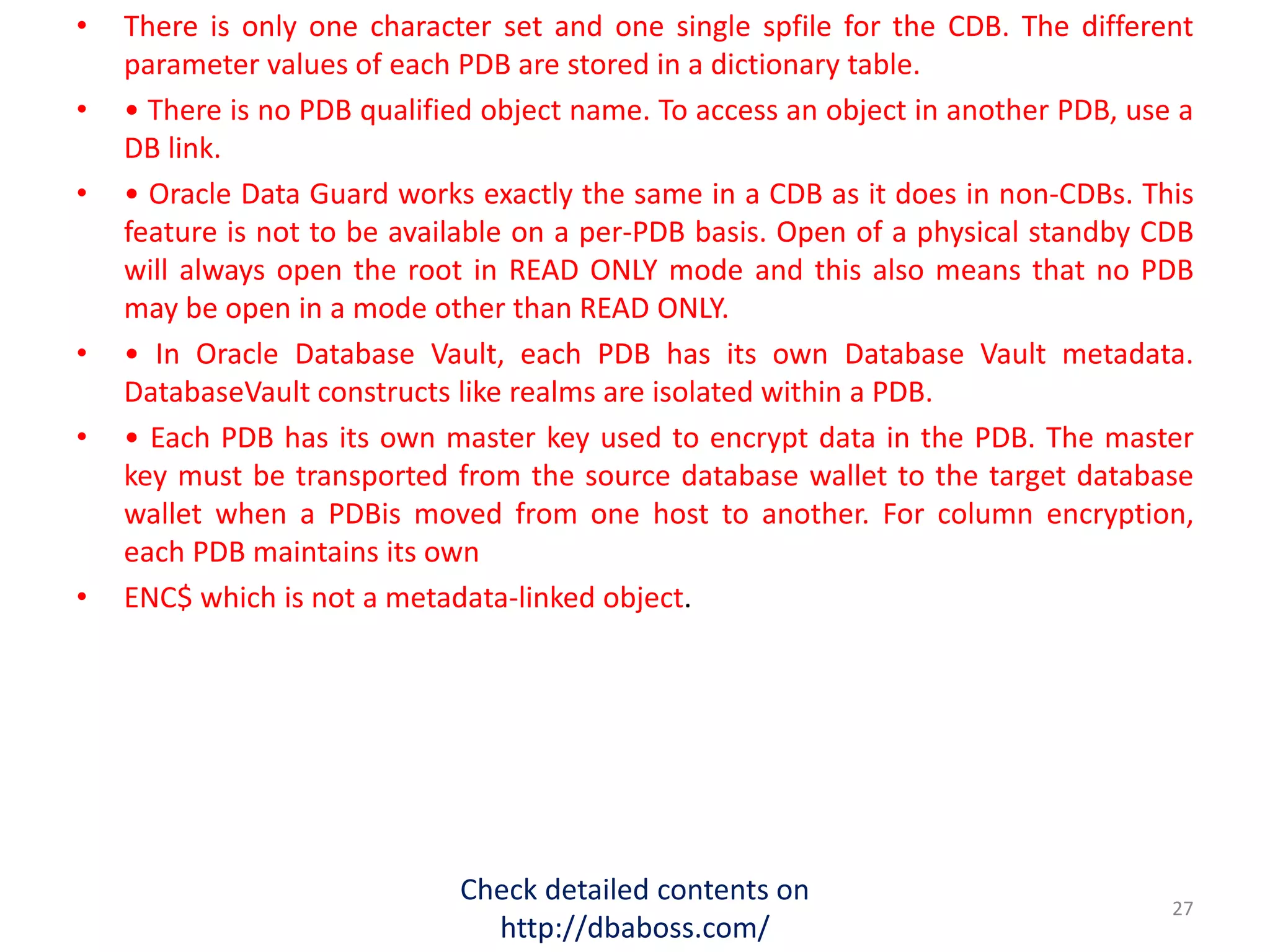This document discusses connecting to a Container Database (CDB) and pluggable databases (PDBs) in Oracle Database 12c. It covers how to connect to the CDB root and PDBs using services, and how connections are unchanged from previous versions. It also discusses users, grants, and roles in a CDB, including how users can be common or local, and how roles can be common or local. It provides examples of how to create common and local users and roles.
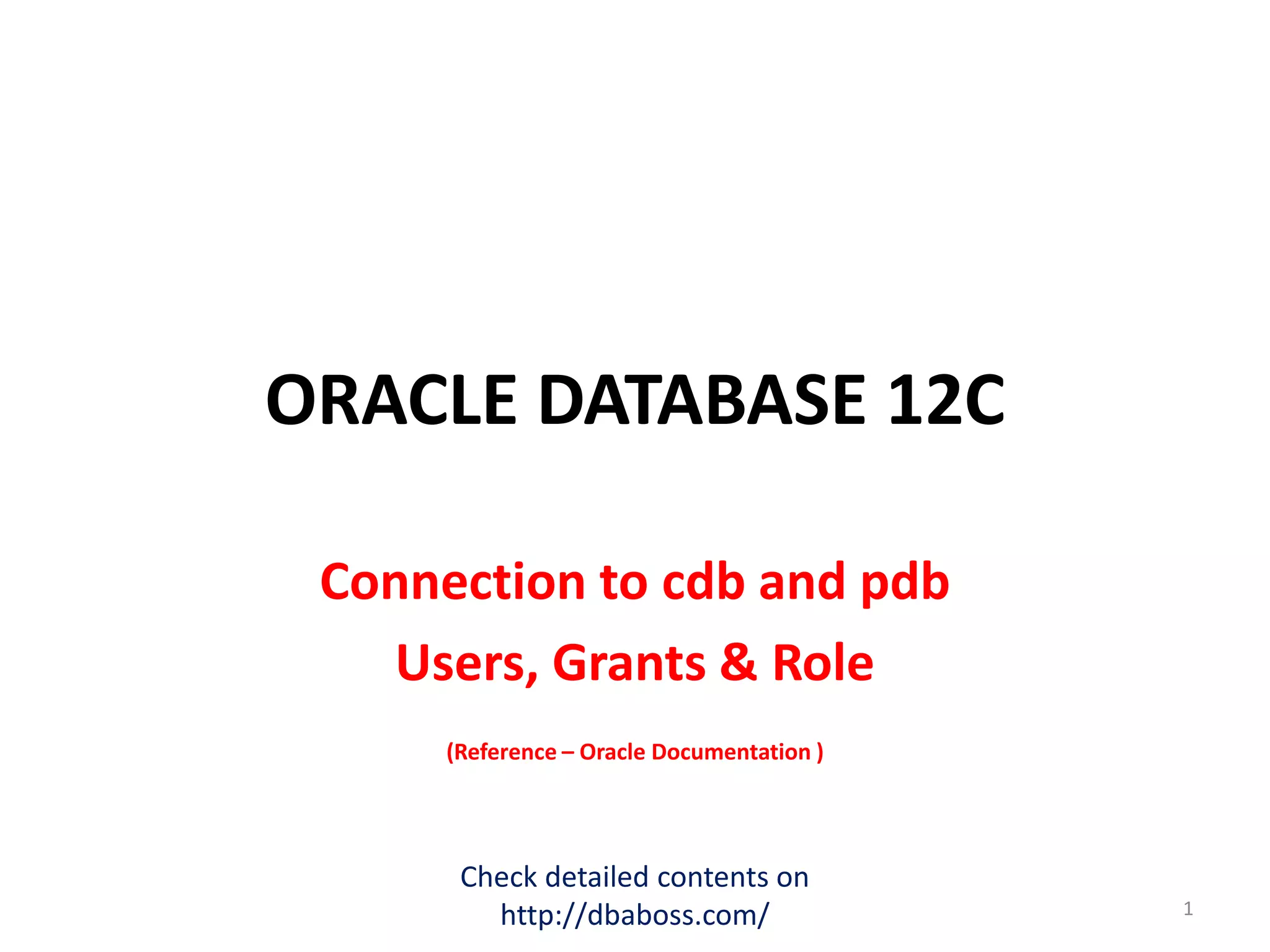

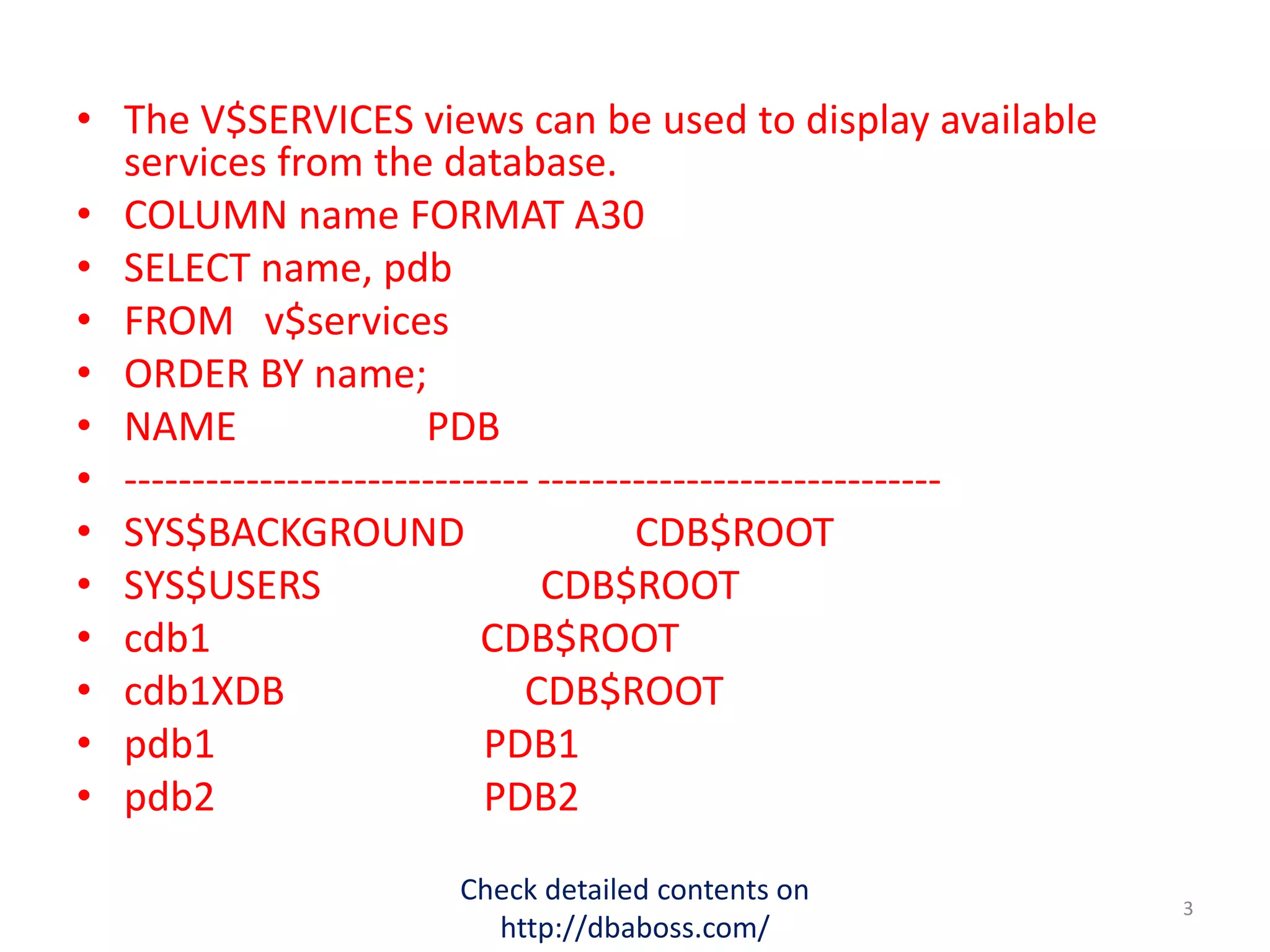
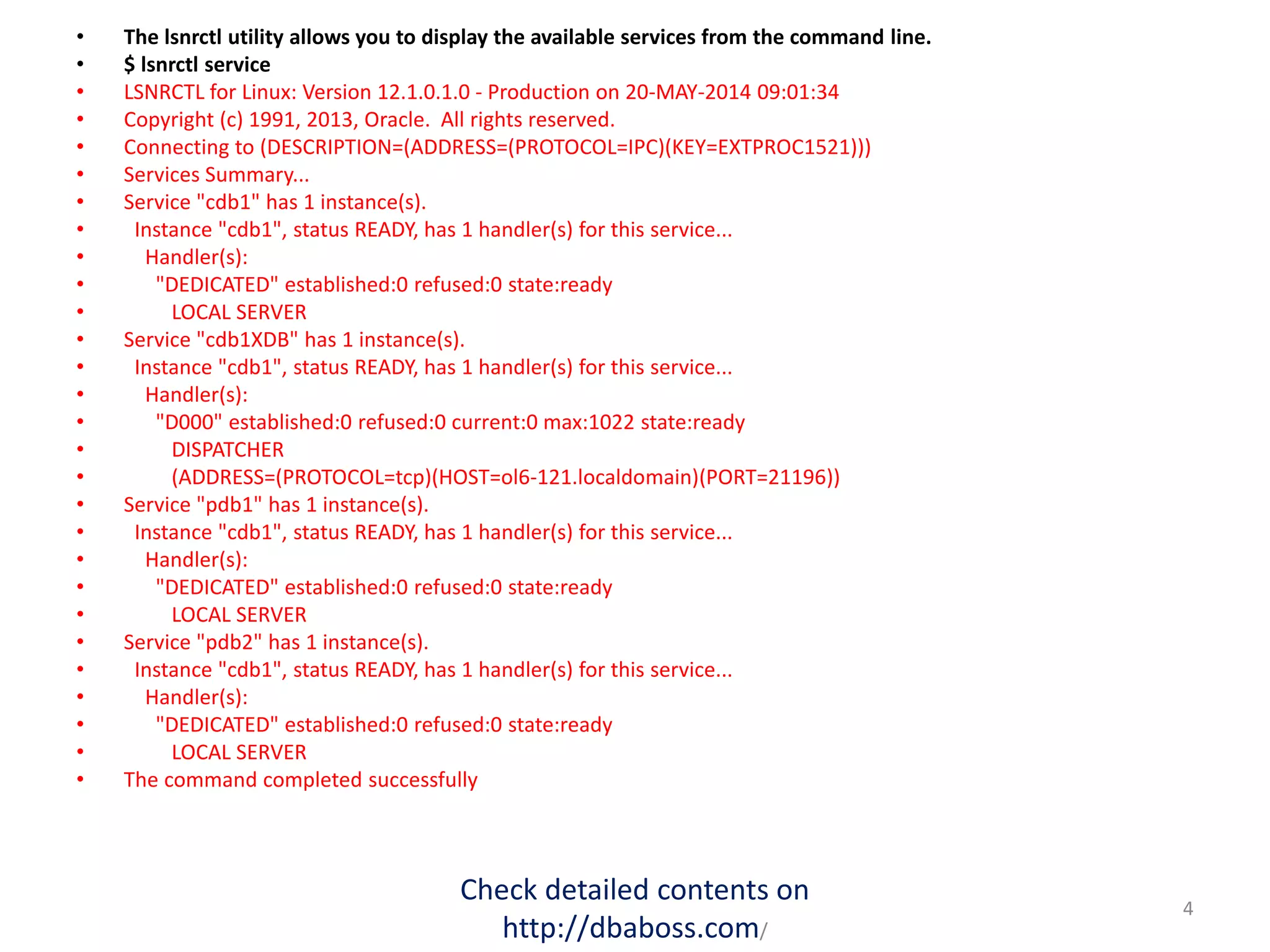
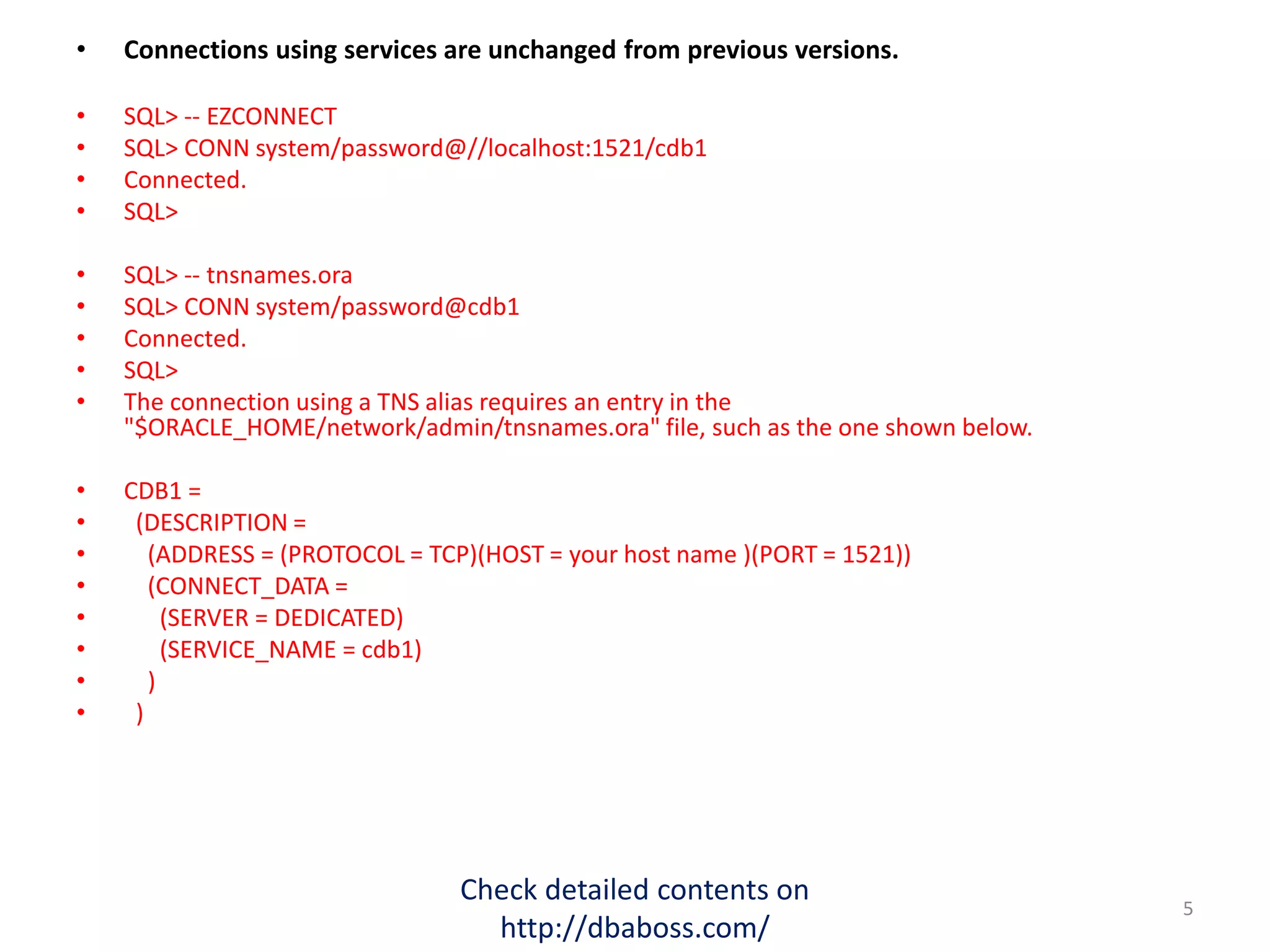
![• In Oracle Database 12c, we can still find this information from
V$INSTANCE. What if I connect to a container database and then
issue an ALTER SESSION command to move into a different
container, i.e. as PDB? Will I get the name of the PDB that I
move into from the V$INSTANCE view or do I essential to look
somewhere else? Lets take a look.
•
• Connect to the container database as normal and use the
V$INSTANCE view to see where I’m at.
•
• [oracle@home_1]$ sqlplus / as sysdba SQL> select
instance_name, version, status, con_id from v$instance;
INSTANCE_NAME VERSION STATUS CON_ID--------------
--- ----------------- ------------ ----------ora12cb 12.1.0.1.0
OPEN 0
Check detailed contents on
http://dbaboss.com/
6](https://image.slidesharecdn.com/presentationday5oracle12c-151118084556-lva1-app6892/75/Presentation-day5-oracle12c-6-2048.jpg)

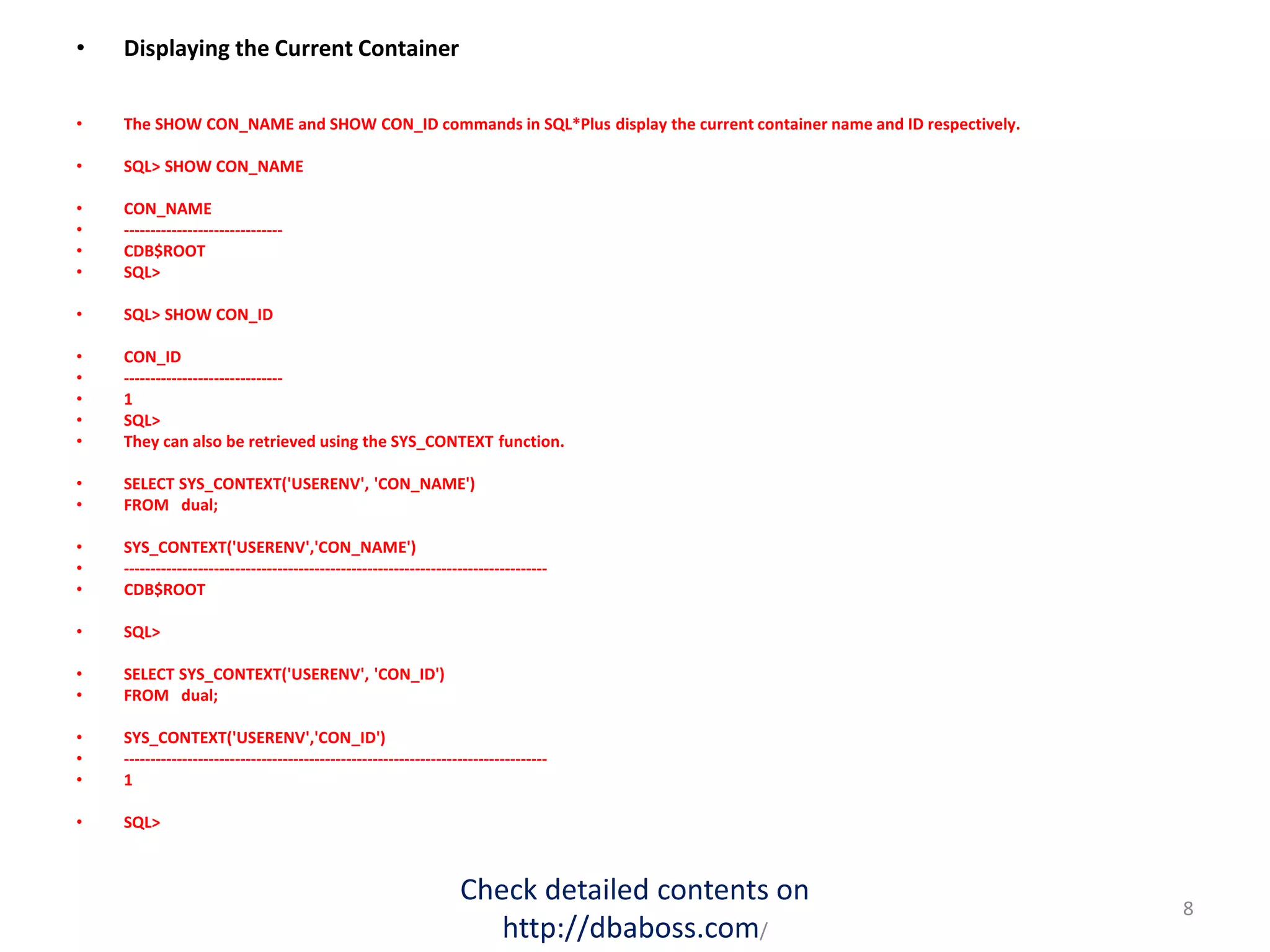
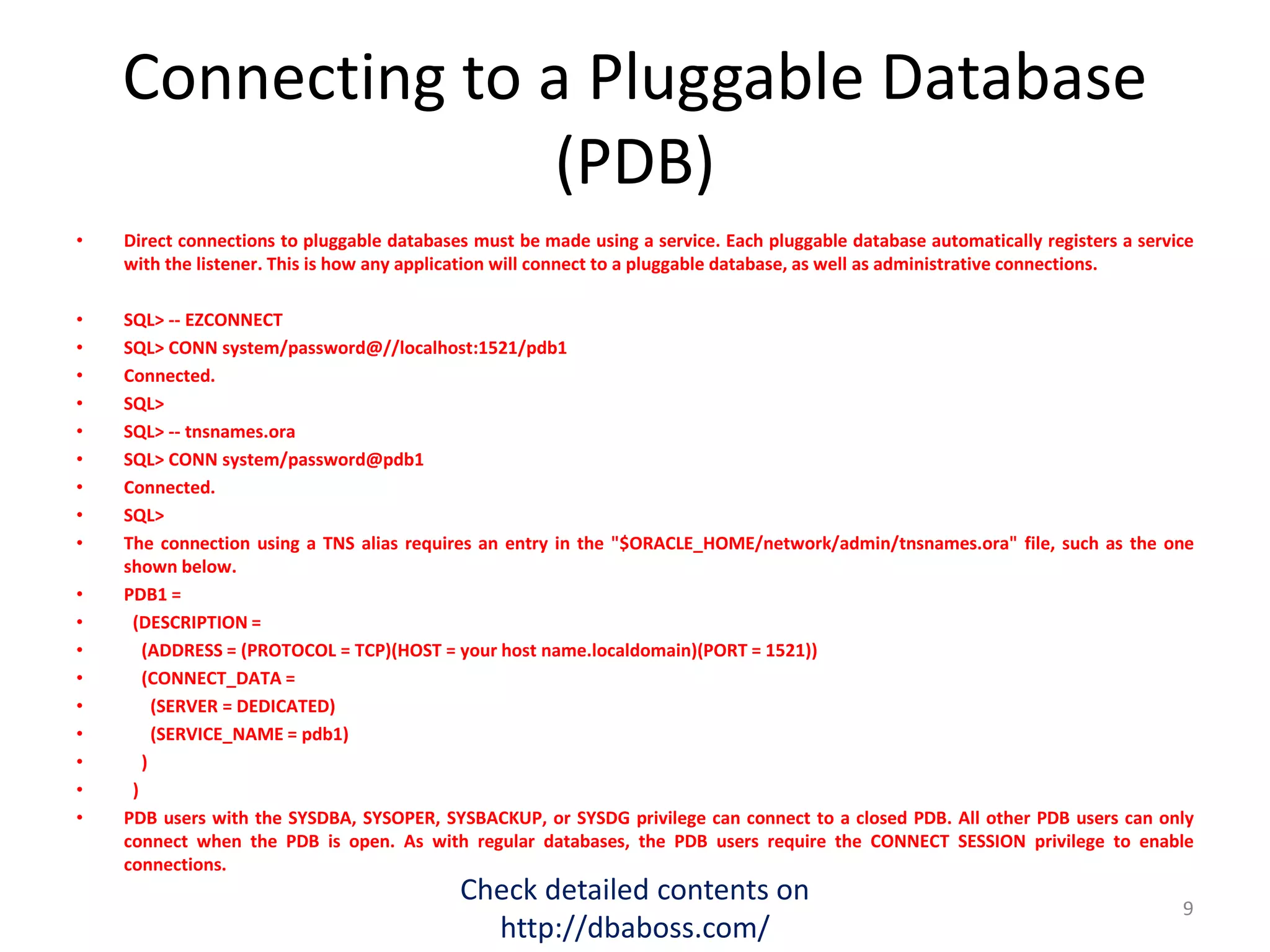
![• The use of SET CONTAINER avoids the need to create a new connection from scratch.
•
• If there is an existing connection to a PDB / CDB$root, the same connection can be used to connect to desired PDB / CDB$root.
•
• – Connect to CDB
• [oracle@e12 ~]$ sqlplus system/oracle@cdb1
• CDB$ROOT@CDB1> sho con_name
• CON_NAME
• ------------------------------
• CDB$ROOT
• – Check the PID for the process created on the operating system
• [oracle@e12 ~]$ ps -ef |grep LOCAL |grep -v grep
• oracle 23271 1 0 10:23 ? 00:00:00 oraclecdb1 (LOCAL=NO)
• – Change the container to PDB1 using Set container
• CDB$ROOT@CDB1> alter session set container=pdb1;
• sho con_name
• CON_NAME
• ------------------------------
• PDB1
• – Check that the operating system PID remains the same as earlier connection is reused and a new connection has not been created
• [oracle@em12 ~]$ ps -ef |grep LOCAL |grep -v grep
• oracle 23271 1 0 10:23 ? 00:00:00 oraclecdb1 (LOCAL=NO)
Check detailed contents on
http://dbaboss.com/
10](https://image.slidesharecdn.com/presentationday5oracle12c-151118084556-lva1-app6892/75/Presentation-day5-oracle12c-10-2048.jpg)
![• – Switch the container back to cdb$root using connect
• CDB$ROOT@CDB1> conn system/oracle@cdb1
• sho con_name
• CON_NAME
• ------------------------------
• CDB$ROOT
• – Check that a new operating system PID has been
created as a new connection has been created
• [oracle@e12 ~]$ ps -ef |grep LOCAL |grep -v grep
• oracle 23409 1 0 10:29 ? 00:00:00 oraclecdb1
(LOCAL=NO)
Check detailed contents on
http://dbaboss.com/
11](https://image.slidesharecdn.com/presentationday5oracle12c-151118084556-lva1-app6892/75/Presentation-day5-oracle12c-11-2048.jpg)
